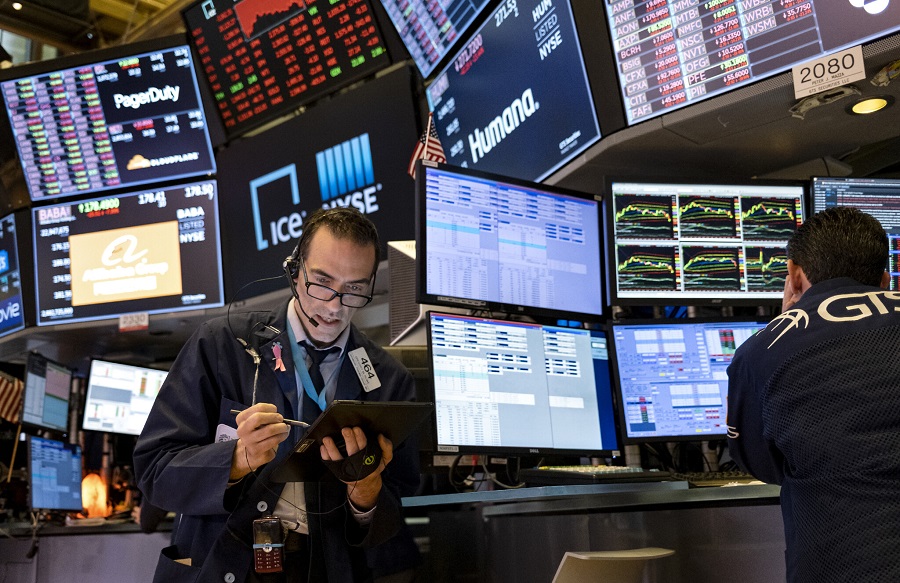Global investors may continue to be drawn to US assets
The global investors may continue to be drawn to US assets, partly because of US dynamism and partly because investment opportunities outside the US may be harmed by US policy.

The attraction of US assets relative to those abroad could still keep the dollar rising.
>> Which currencies stand to gain from geopolitical conflict?
We’ve heard a lot recently about the issue of US dollar dominance. How the greenback could see its position as leader in areas such as reserve holding, debt issuance, currency invoicing and more eroded over time at the potential cost of a weaker currency. But there’s another aspect here to consider which is that, even if use of the US dollar declines, the attraction of US assets relative to those abroad could still keep the dollar rising.
There’s a juxtaposition here between concerns that the US dollar might see its global dominance diminish on one side, and US “exceptionalism” on the other. On the former, there has been patchy evidence of a decline in the dollar’s status, perhaps most commonly seen through the lens of the dollar’s declining share of global reserves.
In the Standard Bank’s view, it does appear likely that the US dollar will lose some of its dominant status which could lower its value in the same way as the erosion of sterling dominance has seemingly weighed on the pound in the post-war period. With regards to the latter, US ‘exceptionalism’ it is not just that the US economy is outperforming others at the moment. Instead, it seems that longer-term structural factors could continue to suck overseas investors into US assets and the dollar.
On the policy front, for instance the veiled protectionism of the US Inflation Reduction Act, combined with the trade frictions with China seem to be drawing investment into the US and sending it away from China. Of course, others have copied the US on both of these fronts but it does seem that it is the US – and the US dollar – that is likely to benefit the most. US outperformance is nothing new; it is one reason why the rest of the world holds around USD12tr more of US bonds and stocks than US residents hold in foreign assets. It is also reflected in the fact that many US assets are expensive relative to their developed-country peers.
In the stock market, for instance, we see this in metrics such as price/earnings ratios which outpace those of other developed countries. To put it more simply, if the status of the US dollar is declining and continues to decline in the future, the US could have to compensate for this by offering better returns, but this is something that it seems to have little problem in doing.
If we look at the budget, for instance, much of which is clearly financed by the USD7.7tr of treasuries held overseas, the dollar’s dominant global status allows the US to finance this shortfall with lower rates and a stronger dollar than would exist in the absence of such dominance.
>> Debt woes for the US dollar
Many other countries that have seemingly played fast and loose with the budget have felt the wrath of the market in terms of higher yields and/or lower currencies, especially in the emerging market space. But it seems that the US is insulated from such fallibility by its dominance, including that of the dollar. And if budget policy, such as the Inflation Reduction Act maintains or enhances the US’s relative economic dynamism there seems little reason to believe that the deficit will become an Achilles heel for the greenback.
In other words, global investors may continue to be drawn to US assets, partly because of US dynamism and partly because investment opportunities outside the US may be harmed by US policy, such as the protectionism towards China, in particular, and the re-shoring drive by first the Trump administration and now the Biden-led government.
But does all this mean that the US dollar has an unencumbered path towards further strength, not just in the short-term, but in the long haul as well? Probably not. For a start, the US has long enjoyed such advantages but the dollar has not always risen. Of course, it has enjoyed quite a decent run of strength over much of the past decade but that’s left it looking somewhat overvalued as a result. Add this to the relatively high price of many US assets, especially stocks, and the worrying debt dynamics and we do feel that the elastic has been stretched quite a bit on the dollar, with a likely snapback to lower levels in coming years.








